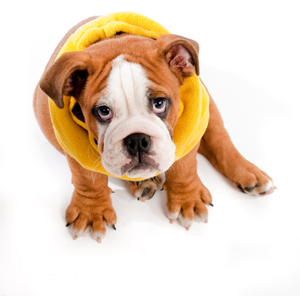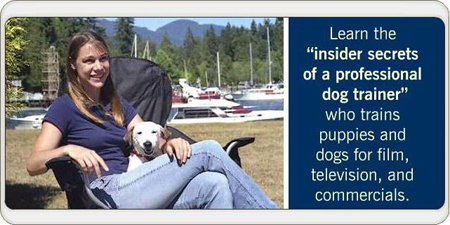Written by Senior Editor Peter Gehr
Is your dog chewing everything in sight? Remedies and reasons a puppy chews. First of all, let’s be sure it’s understood that pups explore just about everything by chewing. One of the best ways to tone down that instant reaction from your little pooch is handling your dog as much as possible. The more human contact he has, the more he learns not to bite fingers, hands, etc. Your new puppy learns how hard he can bite from his mother. Prior to weaning, the mother often chastises her pups when they are being too rough with her nipples when feeding by a quick snap and growl. He also learns by playing with his siblings in play-fighting.
However, once the biting is curbed and he learns that it is not acceptable behavior, one of the next challenges is to stop him from chewing shoes, clothing or any chewable object left laying around.
Dog Chewing Everything in Sight? Remedies and Reasons a Puppy Chews
Puppies are born with the natural desire to investigate which often comes in the form of puppy chewing and digging. This can cause problems when your puppy “investigates” how your furniture can come apart, or digs up your garden. However, punishment is not always the best way to go when it comes to this misbehavior. You will find that reinforcing good behavior can be much more effective.
Puppy Chewing
First of all, when you first get a puppy you must provide him with plenty of chew toys. These will deter him away from the furniture, shoes, socks, flowers and all the other things you prefer him not to chew on. Provide him with a variety of toys to keep them interested and it may be beneficial to reward them when they chew on their toys. If chew toys don’t help, you can use commercial anti-chew sprays such as Fooey Training Spray to keep them away from your belongings.
Chewing is often a behavior associated with dog separation anxiety. You can lessen the problem by teaching your dog that you cannot provide him with attention 24/7. If your dog is constantly following you around, sleeping next to you in your bed… and destroying things when you’re not around, it may signal that you need to take action. Training him to sleep in his own bed or crate as well as exercising him and keeping him preoccupied before you leave may help him to feel more relaxed. It may also help to keep a TV or radio on while you are away. Easing into short departures and eventually longer departures will teach your dog that you will return and it’s ok to be alone for a while. Click here to visit the original source of this post
Dog chewing everything in sight? Remedies and reasons a puppy chews are actually similar to the remedies and reasons a human baby likes to chew everything. It’s all about discovery. However, your puppy needs to learn from the very beginning what is acceptable to chew and what is not. With new teeth growing at a rapid rate, teething problems can accelerate the desire to chew anything in sight. But one of the best ways to curb your puppy developing a bad habit of chewing shoes is to provide him with a better alternative. Dog chews are available and are made from animal hide and provide a great substitute to chewing anything else that you do not want him to chew. These are some basic guidelines, and I’ll be writing more on this topic so stay tuned.








